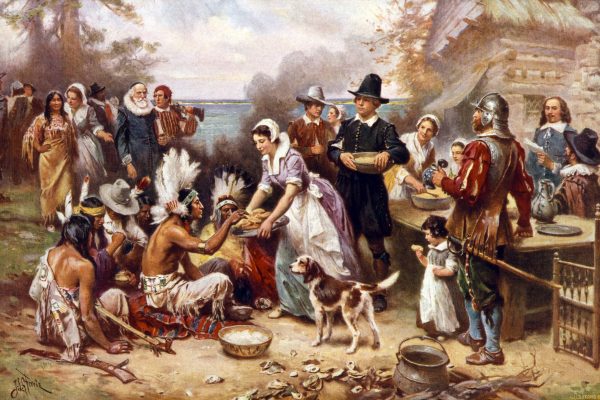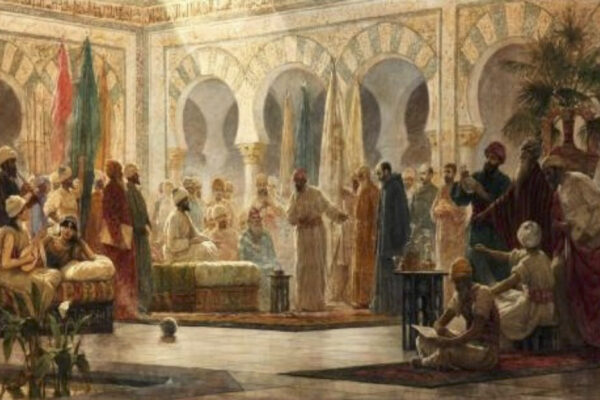Kings and History of Mali
The emergence of Mali as an empire has roots in the Battle of Kirina, when the Mandinka king, Sundiata, defeated Sumanguru, leader of the Kingdom of Tegrur. [1] Ghana, at this point was an empire already succumbing to the strains of a weak economy and leadership. The adaptation of Islam in the Mali empire is a source of controversy among historians and the different arguments will be outlined. Although, Sundiata did defeat a weakened Tegrur kingdom, Islam was not the basis of the establishment of the Kingdom of Mali. Muslim historians tend to point to the first king of Mali as Barmandana, who converted in 1050, mentioned by Ibn-Khaldun, a famed Arab historian/traveler.[2]
For Barmandana, converting to Islam had many advantages politically and economically. Caravans coming to and from Mali were subjected to raids from Arab-Berber/Muslim tribes living within the empire. When the conversion of Islam took place, these tribes were able to work in the government of the empire. Tribes also had to pay tribute to the Mali government, caravans were now protected and secure. [3]
The second king of Mali, Mari-Djata, defeated the Susu, bitter rivials of the Mali Empire, and conquered their land.[4] In a true show of upward mobility of the Mali society, a freed slave of the royal family became the 7th King of Mali, Sakura. [5] Ibn-Khaldun says that Mali reached a new political climax under the reign of Sakura. This was a time of uncertainty, as many in the Mali court would rather see the royal lineage placed back on the throne. These courtiers would have to wait for their wish, as the throne would not be occupied by a royal heir until Mansa-Qu took power in 1308.[6]
Mansa-Qu would be the last king of the Mari-Djata dynasty; in the year 1312 one of Mali’s most famous rulers would come to power, Mansa Musa, hailing from the Abu-Bakr dynasty.[7] Oral tradition says that Mansa Musa was the son of Abu-Bakr, who was the brother of Mari-Djata. The issue with this claim is that over one hundred years’ separates Abu-Bakr and Mansa Musa, at best Mansa Musa was the grandson of Abu-Bakr but, still of royal lineage.
The Golden Age of Mali was said to be a result of the reign of Mansa-Musa. Ambitious building projects designed by Al-Sahili, an Andalusian poet turned architect. Mansa Musa would meet Al-Sahili in Mecca during Hajj and convinced him to come to Mali as his chief architect. Al Sahili would design the royal audience chamber, palace in Madugu, and the Great Mosque. [8] While on Hajj, in the 1324, Mansa Musa would distribute so much gold that it caused inflation in Cairo for years to come. Following Mansa Musa was his son Mansa Magha, which broke with with the tradition of handing the throne to the next oldest male. If Mansa Musa would have stayed true to tradition his brother, Mansa Sulayman would have been next in line for the throne. Mansa Musa’s decision should not come as much of surprise since while on hajj, he appointed his son to chief deputy not his brother.[9]
Mansa Magha would only reign four years until his death, and with his death tradition was once the norm; Mansa Sulayman became king of Mali in 1341. Sulayman did not waste time extending and expanding the borders of the empire and establishing Islam throughout the new dominions. Sulayman was also the target of a coup involving his chief wife. To secure his power he had her imprisoned and executed. [10]
With the death of Sulyman, Mali descended into a state of Civil War between the Houses of Mansa Musa and Musa Sulayman who both claimed the purest legitimacy to the throne. Mansa Sulayman’s son Qasa would reign for a brief nine months who was killed by the son of Mansa Magha, Mansa Djata. Mansa Djata was the last king to rule over a united Mali, the empire began to crumble and eventually would be overpowered by the Songhay dynasty.
Timbuktu: A Home of Forgotten Scholarship
Timbuktu was founded towards the end of the fifth century of the century by the Masufa tribe. In fact, by the fifteenth century some of Timbuktu’s greatest scholars would hail from the Masufa tribe. Timbuktu was an economic and educational hub which connected “tropical Africa” and the Mediterranean. One of these educational centers was designed by al-Sahili, known as the Mosque of Sankore. The mosque was financed by a woman from the Aghlal, a religious Tuareg tribe. The Mosque of Sankore would became a place for learning tasfir and fiqh.
One family has a rich history of scholars coming from this mosque, know as the Aqit. Muhammad Aqit settled in Timbuktu around the year 1450, and his grandson, Abu-Thana became imam of the Sankore Mosque. Later Abu-Thana would serve as a qadi in Timbuktu for 50 years. During this time he wrote a commentary called “Islamic Rulings of Kahlil Ishaq.” Abu-Thana was proceeded by his son Muhammad, who was proceeded by his student Ahmed Baba.
Ahmed Baba produced a groundbreaking book, which is a collection of biographies of scholars from the Malaki school dating back to the year 951. Ahmed Baba spent the first half of his life in Timbuktu but, was sent to Marrakesh when Morocco occupied Mali in the year 1591. He was jailed for two years but, was forced to stay in Morocco and teach at “The Mosque of the Nobles.”
Another famed scholor is Abd al-Rahman al Sadi who stared a historical analysis of the Mali, Songhay, and Ghana empire. It was finished by his sons after his death then revised by his grandson, Ibn al-Mukhtar in 1665.
Although Mali produced many intellectuals of the time this is simply a review of the ones mentioned in the article.
References
[1] Chancellor Williams, The Destruction of Black Civilization: Great Issues of a Race from 4500 BC to 2000 AD, (Chicago, Third World Press, 1987), 201.
[2] N. Levtizion., The Thirteenth and Fourteenth Kings of Mali, (Cambridge, Cambridge University Press, 1963), 342.
[3] Williams, The Destruction of Black Civilization, 202.
[4] Levtizion, Kings of Mali, 203.
[5] Levitzion, Kings of Mali, 345.
[6] Levitzon, Kings of Mali, 345.
[7] Levtzion, Kings of Mali, 353.
[8] J.O. Hanwick, An Andalusian in Mali: A Contribution to the Biography of Abu Ishaq al- Sahili, 59.
[9] Levtzion, Kings of Mali, 347.
[10] Levtzion, Kings of Mali, 348.





